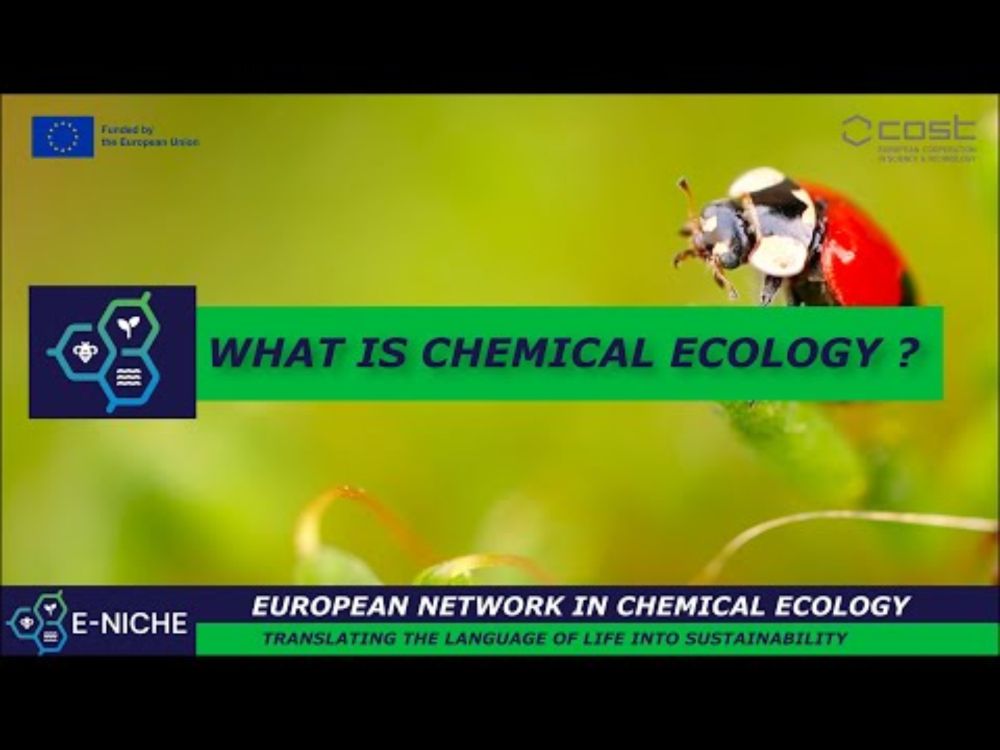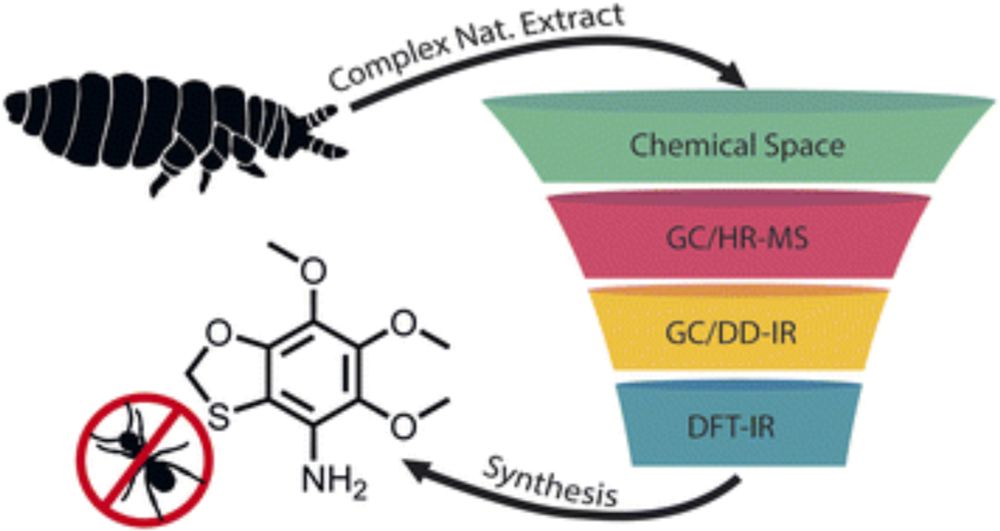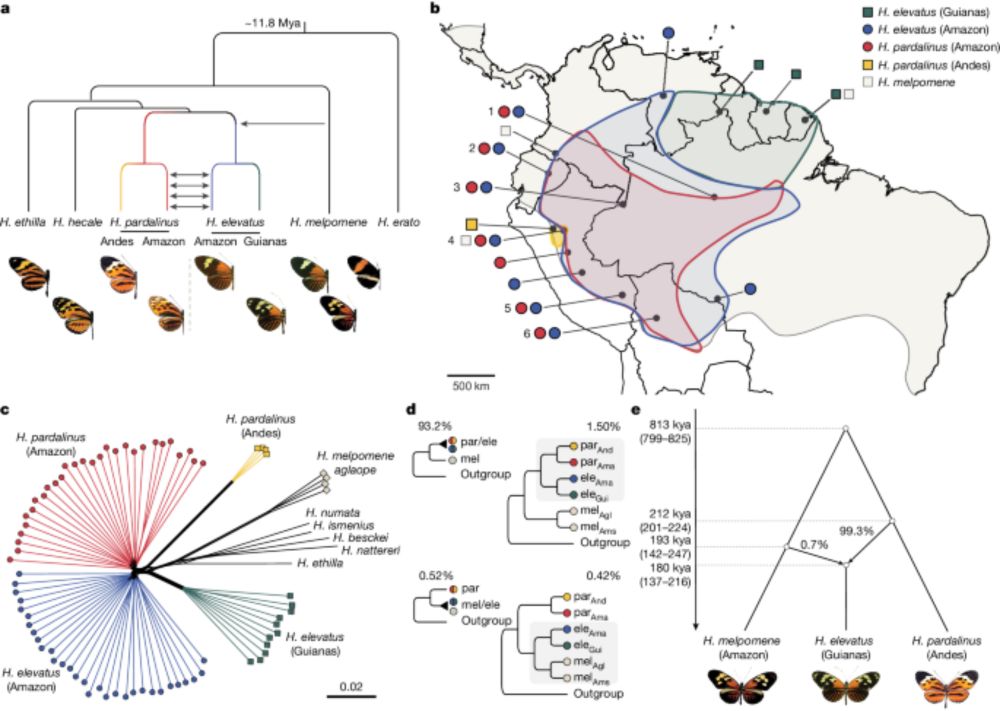
MACE release 8 is now available. It contains 680 EI- and 50 Orbitrap mass spectra, including terpenoids, pheromones, alkaloids, lipids, etc.
The open-access data can be found at
doi.org/10.24355/dbb...
The MACE website with individual spectra is accessible via🧪
www.oc.tu-bs.de/schulz/html/...
03.09.2025 12:36 — 👍 4 🔁 4 💬 0 📌 0

We investigated the synthesis of methyl-branched long-chain alkyl methyl ethers, occurring in spider cuticular lipids. The late introduction of the methyl group appears to be superior compared to carrying it along from the beginning. See our article in Eur. J. Org. Chem.
doi.org/10.1002/ejoc...
28.07.2025 15:07 — 👍 0 🔁 0 💬 0 📌 0
Please try again later. the link is correct. The message means currently to many accesses
30.04.2025 11:44 — 👍 1 🔁 0 💬 0 📌 0

MACE is an open-access mass spectral database of electron-impact (EI) mass spectra. Release 7 is now available with 520 EI spectra and 32 Orbitrap spectra.
doi.org/10.24355/dbb...
A description of MACE 7 can be found at:
www.oc.tu-bs.de/schulz/html/...
🧪 #secmet
29.04.2025 07:55 — 👍 9 🔁 3 💬 1 📌 0
Orchid bees love HNDB! We developed a short g-scale synthesis of this compound, 2-hydroxy-6-nona-1,3-dienylbenzaldehyde, published in Synlett:
www.thieme-connect.de/products/ejo... 🧪
#secmet #natprod
10.04.2025 14:25 — 👍 4 🔁 1 💬 0 📌 1

Anton Möllerke, Braunschweig, und Nina Hartrampf, Zürich, erhalten DECHEMA-Preise für Naturstoffforschung 2025
Anton Möllerke from our group won the DECHEMA PhD prize for Natural Product Research 2025 for his work on the chemistry of springtails.🧪
nachrichten.idw-online.de/2025/03/04/a...
05.03.2025 09:53 — 👍 2 🔁 0 💬 0 📌 0

We have discovered a new type of steroid with contracted A-ring, the batrachane skeleton, in the gular scent glands of Odontobatrachus frogs. See the identification and synthesis of various batrachodienes, potentially used as signals, in Angew. Chem.
t.co/rmoLRDW0bC
05.12.2024 08:56 — 👍 5 🔁 2 💬 0 📌 0

We congratulate Natural Product Reports on 40 years of publication with a highlight on the chemistry of springtails. Please take a look at the fascinating compounds produced by these tiny soil dwellers.🧪
doi.org/10.1039/d4np...
13.11.2024 08:38 — 👍 11 🔁 2 💬 0 📌 0

MACE release 6 is now available. It contains over 420 EI mass spectra and almost 30 orbitrap mass spectra.
The data can be found at leopard.tu-braunschweig.de/receive/dbbs...
The MACE website with individual spectra is accessible via www.oc.tu-bs.de/schulz/html/...
30.10.2024 10:25 — 👍 3 🔁 1 💬 1 📌 0

In memory of the late Paul Weldon: This new but last joint paper describes unusual fatty acids from the scent glands of the endangered Mangshan pit viper.
www.beilstein-journals.org/bjoc/article... 🧪
28.10.2024 09:04 — 👍 1 🔁 1 💬 0 📌 0
YouTube video by The E-NICHE channel to European Chemical Ecology
What is Chemical Ecology (and why you should care)
The European cooperative program e-niche, sponsored by the EU Cost Action, has released a short video explaining why we are interested in Chemical Ecology and what it actually is.
🧪 youtu.be/Cv6SIx2b-ms
26.09.2024 07:51 — 👍 4 🔁 0 💬 0 📌 0

Unique highly hetero-substituted benzenes are defense compounds from tiny springtails. The minute amounts available needed the combination of GC/MS, GC/IR, DFT calculation, and synthesis to arrive at the structures. 🧪
t.co/T6QQe72uiT
04.09.2024 12:34 — 👍 0 🔁 0 💬 0 📌 0
Maybe something for #secmet
24.07.2024 07:02 — 👍 0 🔁 0 💬 0 📌 0

Springtails are great terpene chemists, but they can also synthesize other stuff. See our analysis of 23 species in iScience and their unique cuticular chemistry. Organic analysis and synthesis are needed to decipher their compounds.
t.co/dvoeGLFia8
23.07.2024 15:47 — 👍 0 🔁 1 💬 0 📌 1

Socialane, the first cyclic regular [9]-terpene was synthesized and identified by us as cuticular hydrocarbon of the tiny springtail Hypogastrura socialis. If you are interested its stereoselective synthesis, see doi.org/10.1002/chem... in Chemistry Eur. J.
02.04.2024 11:15 — 👍 0 🔁 0 💬 0 📌 0

Volatile salinilactones, produced by the bacterium Salinispora, target disulfide-isomerases. See doi.org/10.1002/advs... in Advanced Science, by K. Jerye et al. of the @BronstrupLab. This is one of the first studies describing how bacterial volatiles act.
05.03.2024 09:46 — 👍 0 🔁 0 💬 0 📌 0

The first issue of the Journal of Natural Products this year starts with our cover illustration. pubs.acs.org/toc/jnprdf/8...
01.02.2024 13:33 — 👍 1 🔁 1 💬 0 📌 0

MACE: MAss spectra for Chemical Ecology
We are happy to announce release 5 of MACE. MACE now includes 254 EI mass-spectra from 13 groups. Visit the MACE website oc.tu-bs.de/schulz/html/...
and the MACE data repository. doi.org/10.24355/dbb...
MACE is open access.
03.12.2023 22:02 — 👍 0 🔁 0 💬 0 📌 0

We discovered and synthesized the first cyclopropane containing cuticular hydrocarbon from an arthropod, called sarekensane. The high-mountain springtail Vertagopus sarekensis uses it. Identification requires derivatization and GC/MS methods. See more in J. Nat. Prod.
t.co/qObtLgiEFo
14.11.2023 16:01 — 👍 5 🔁 0 💬 0 📌 0
A project of The Center For Scientific Integrity https://centerforscientificintegrity.org/
Daily newsletter http://eepurl.com/bNRlUn
Database http://retractiondatabase.org
Tips team@retractionwatch.com (better than @ replies)
Director Max-Planck-Institute for terrestrial Microbiology, Head of Department for Natural Products in Organismic Interactions
News from the Insect Symbiosis Department 🪲🦠 , at the MPI for Chemical Ecology, on how insects and their symbionts adapt to challenges.
Profile picture by Rebekka Janke
Research biologist and lover of nature, mostly bacteria, insects and (lately) birds
🍄 🌿 🌱 ➡️ 💊 🧫
#naturalproducts #ethnobotany #massspec #metabolomics #infectious disease #scicomm
Assistant Professor | Penn State
https://sites.psu.edu/kellogglab
he/him/his
🇩🇪🇨🇦 Animal Metabolomics & Ecology Lab at Greifswald University. Chemical Ecology and Natural Products identification using LC-MS/MS and GC/MS to develop Urban Integrated Pest Management.
www.animal-metabolomics.com
Also husband and dad of my favorite 2
Hier postet das Team Presse und Kommunikation der Technischen Universität Braunschweig.
Impressum: https://www.tu-braunschweig.de/impressum
Flagship journal for @rsc.org, open access with no publication fee, all topics in chemistry. chemicalscience-rsc@rsc.org
Celebrating our 15th year in 2025! 🌐 Website: rsc.li/chemscience
High impact, critical reviews in natural products research and related areas from RSC Publishing.
Published by @rsc.org 🌐 Website: rsc.li/natprodreports
We love all things involving natural products discovery!
We investigate the chemical communication between different organisms - plants, insects and microbes - in Jena, Germany.
Professor for Metabolomics, Kiel University and Head of Metabolic Interactions group, Max Planck Inst. for Marine Microbiology #spatialMetabolomics #host-microbe #metabolomics #massspec #hostmicrobe #spatialbiology #coffeelover
Microbiology PhD, co-author of antiSMASH, Open Source geek, views are my own. @kblin@scholar.social
#natural_products #hostmicrobe #symbioses
University of Michigan
Department of Microbiology and Immunology
Department of Medicinal Chemistry
Find us at http://balunaslab.org
Natural products/specialised metabolism @JohnInnesCentre.bsky.social
https://www.jic.ac.uk/people/barrie-wilkinson/
https://www.cmi-norwich.ac.uk/people/prof-barrie-wilkinson/
We are the Chair for Pharmaceutical Biology @unifau.bsky.social! Infection therapy, #antibiotics and #ExtracellularVesicles, and supporter of Hertha BSC (does not apply to all group members)
www.pharmbio.nat.fau.de
Posts about the antiSMASH project and related tools/databases.
I love molecules microbes make and mass spectrometry. I can spend hours looking at MS/MS with the dream we can annotate every molecule.

























